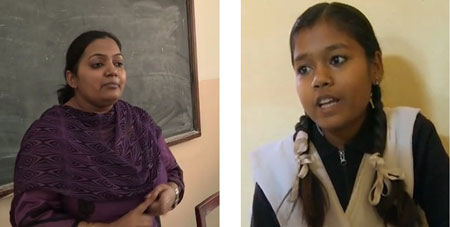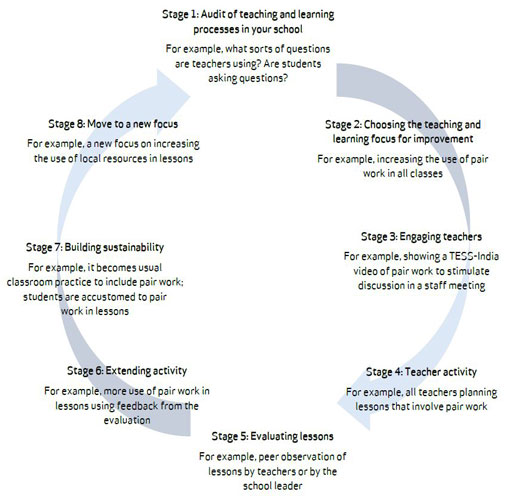1 Enabling participatory, student-centred pedagogy
Back in 2005, the NCF made it clear that students’ participation in their learning is key to achieving the best learning outcomes. Students should have the opportunity to:
- contribute ideas when learning
- talk about and discuss their thoughts and experiences
- relate what they learn in school to their everyday lives.

Research agrees with this. The reality is that implementation is difficult. Many teachers are convinced that factors such as large class sizes or multigrade and multilingual classes prevent them from being able to adopt more student-centred approaches. The TESS-India OERs provide practical examples – in the form of case studies and activities – for teachers to carry out in their classrooms to help them overcome these concerns.
In good schools, teachers themselves try to be active learners and reflect on their practice by regularly:
- examining what they do
- checking what is actually being learned by each student
- adapting and improving their classroom practices including their teaching skills.
As a school leader, part of your role is to support teachers to experiment in their classrooms and reflect on their practice. When teachers see and experience participatory approaches to teaching, they will appreciate the benefits. Once they experience the benefits for themselves, teachers will gain confidence in adopting new approaches.
In Activity 1 you will consider the present teaching and learning in your school and choose a focus for improvement over the next few weeks. The following activities will then help you to support teachers in improving their classroom practice. This is illustrated in Figure 2.
Activity 1: How student-centred are your classrooms?
This activity asks you to examine how far student-centred teaching and learning already exists in your school. It is important to note where good practice is already happening because you can build on this.
Using the table in Resource 1, carry out an audit of current practices in your school. This is for your benefit, so you do not need to show it to anyone. You are looking for evidence of how many and to what extent teachers are enabling student participation in their classes. You are encouraged to reflect on your own teaching as well. Be as honest as you can be.
You will come back to this audit in a later activity.
What the school leader can learn in this unit

